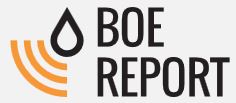Alberta government’s capacity to raise revenues has shrunk 41.3% since 2014/15; moving closer to “have-not” status
CALGARY, Alberta – Alberta’s ability to raise own-source revenues — known as the province’s fiscal capacity—has shrunk substantially in the past six years. This development has rendered the province’s high spending levels unsustainable, and places Alberta at risk of becoming a “have-not” province, finds a new study released today by the Fraser Institute, an independent, non-partisan Canadian public policy think-tank.
“Just a few years ago, Alberta was able to raise large amounts of revenue with comparatively low tax rates in part because of large natural resource revenues, which have declined substantially.” said Ben Eisen, a senior fellow with the Fraser Institute and author of The Great Convergence: Measuring the Fiscal Gap Between “Have” and “Have-Not” Provinces.
The study finds that as recently as 2007-08, Alberta’s per person fiscal capacity — again a measure of the province’s ability to raise own-source revenues, was nearly twice as high (92.8% larger) as the rest of Canada.
This year, the per person fiscal capacity gap between Alberta and the rest of Canada is estimated to be just 4%. The gap has closed almost entirely.
“Per person spending in Alberta is about 20% higher than in other large provinces. This was unsustainable before, but now that the province’s fiscal capacity has declined, we’re seeing historically high deficits year after year.”
In fact, if Alberta’s fiscal capacity gap continues to shrink relative to the rest of Canada, the province could become eligible for equalization transfers before long, making it a so-called “have-not” province.
“The idea that Alberta’s fiscal capacity could fall to the point it would be within have-not status would have been unthinkable a decade ago. But now, here we are. Policymakers in Edmonton need to recognize how much has changed, and adjust their spending plans accordingly,” Eisen said.






